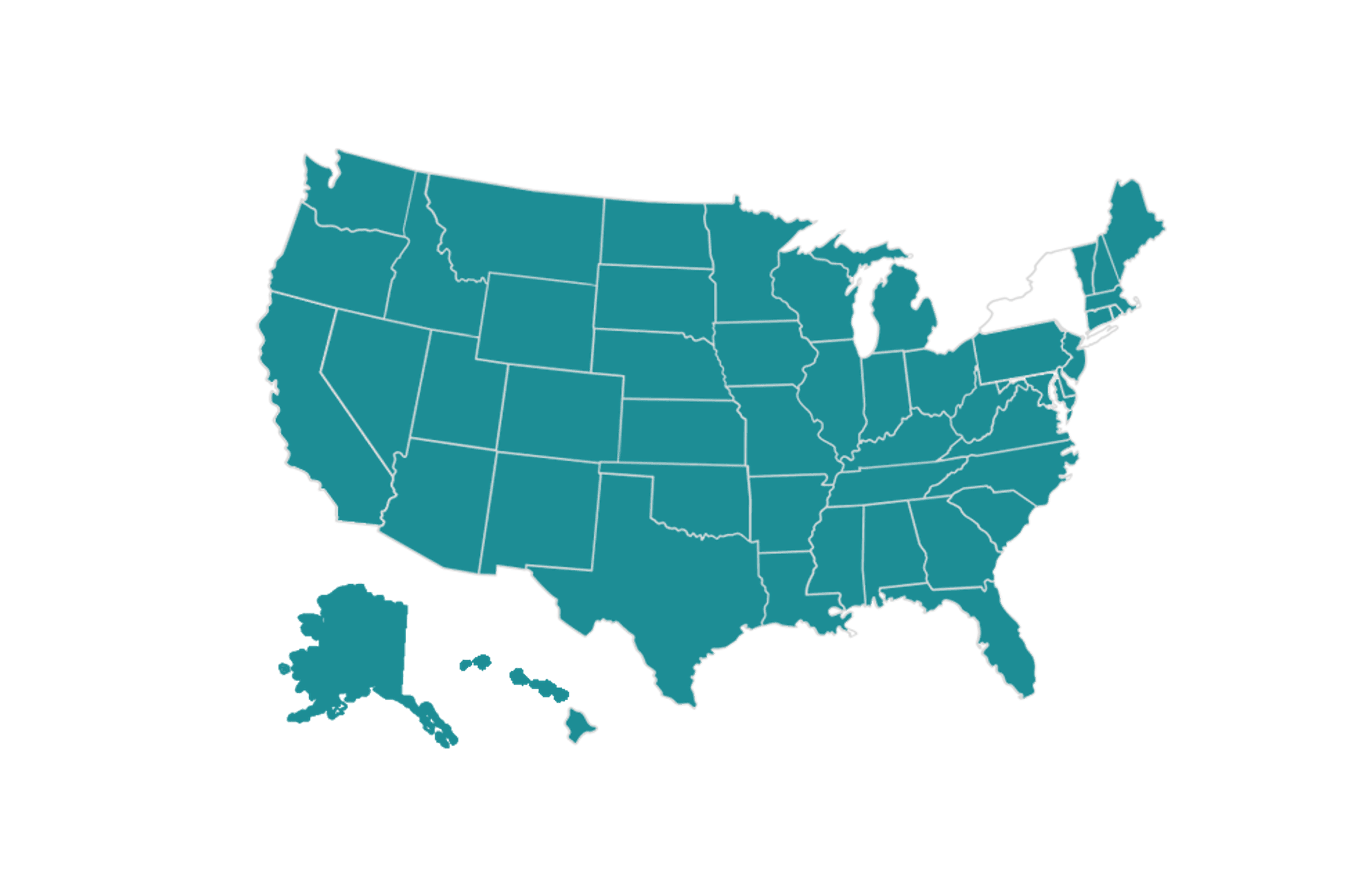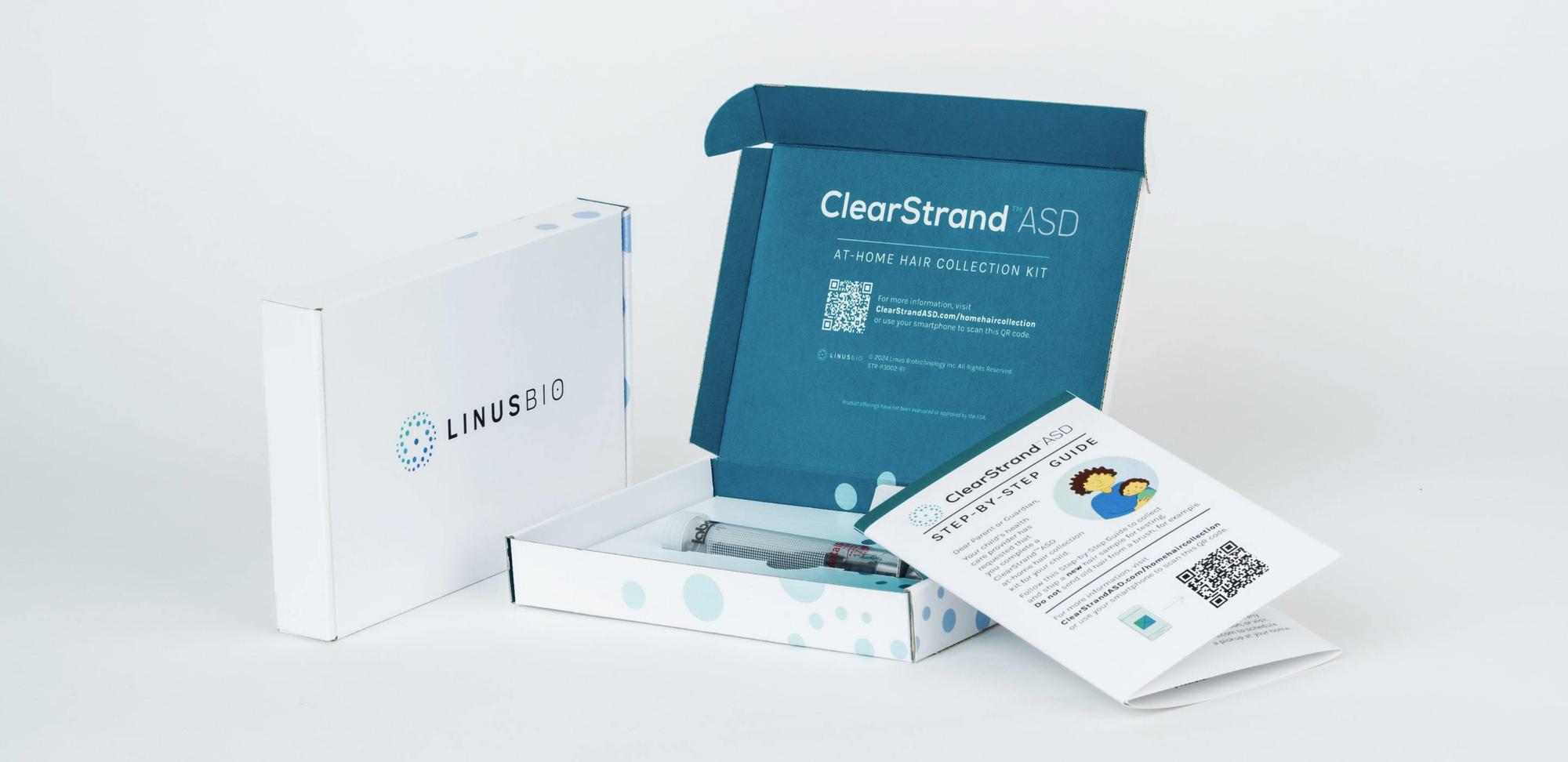ClearStrand-ASD for your patients when autism is a concern
Health Care Provider Overview
What is ClearStrand-ASD?
ClearStrand-ASD is a new biochemical test that detects a biomarker associated with autism using a single strand of hair. It is intended to aid HCPs in ruling out autism in patients aged 1 month up to 4 years (48 months) when autism is a concern. Rx only. 1 2
ClearStrand-ASD must be ordered by a licensed health care provider and is not covered by insurance.

If you think ClearStrand-ASD is right for your patient, learn more about how to order.
Order ClearStrand-ASD for your patientsScience and Clinical Evidence
ClearStrand-ASD is a biochemical test that bridges genomics and the environment.
It maps the dynamic patterns of an individual’s unique biological response to environmental exposures over time at a molecular level.3
Hundreds of time points along a strand of hair are analyzed, and thousands of data features are generated with proprietary robotics and lasers, revealing patterns underlying an individual’s metabolism of essential and nonessential elements.3
Then, machine learning-based AI identifies whether a patient has the molecular signature - a biomarker - associated with autism spectrum disorder.3

ClearStrand-ASD is for children aged 1 month up to 4 years (48 months) when autism is a concern

ClearStrand-ASD is now available in 49 states for $499
Clearstrand-ASD is available for patients in all states except for those in NY.
The price includes kit shipment, testing of the sample at our CLIA-certified lab, and a results report.
To be notified when it is available in your state, fill out our contact form.

Results may support early clinical decisions about the child’s care, even before signs of autism appear. 3
Interpreting the results
ClearStrand-ASD provides an objective result of negative or non-negative
ClearStrand-ASD is not a standalone diagnostic test; HCP should determine if a child should receive a diagnostic evaluation after reviewing the test result.



ClearStrand-ASD: Autism risk assessment with high negative predictive value
Test performance is based on the intended use in children with an elevated likelihood of autism, such that prevalence of the condition in this population is 14%. 2 The overall prevalence in the US is 3.2%. 14
ClearStrand-ASD has a negative predictive value (NPV) of 95% in a population of children aged 1 month up to 4 years (48 months) where autism is a concern. 2
Health Care Provider Ordering Overview
If you think ClearStrand-ASD is right for your patient, please complete the following steps.

TRF & Caregiver Consent are completed, signed, and faxed to LinusBio
The ordering Health Care Provider (HCP) completes the Test Requisition Form (TRF), the Caregiver Consent is read and signed by the caregiver, and the forms are faxed to LinusBio.

Hair sample is collected
The hair sample may be collected at the patient's home by their caregiver, or in the provider's office, and returned to LinusBio.

Discuss results with your patient's caregiver
Results will be faxed to the ordering provider within 15 business days of receiving the sample at the lab.
Thank you for your request
Thank you! Your message has been sent successfully. We’ll get back to you within the next 3 business days.
Not ready to order? Contact us to learn more
FAQs for HCPs
ClearStrand-ASD demonstrated a:
- negative predictive value (NPV) of 95%
- positive predictive value (PPV) of 17%
- sensitivity of 90%
- specificity of 29% 2
The test performance was validated in a study including patients with an elevated likelihood of autism. Each test result was compared to a reference diagnosis made by a specialist clinician based on DSM-5 criteria. 2
NPV and PPV are reported based on a 14% prevalence, which reflects the test’s intended use population of children aged 1 month up to 48 months where autism is a concern. The prevalence of autism in the general population is 3.2%. 14 Prevalence is the number of people in a particular population that have a condition, relative to all the people in that population. Prevalence is typically shown as a percentage (such as 3.2%) or a proportion (such as 1 in 31).15
Since the purpose of ClearStrand-ASD is to aid health care providers in ruling out autism, a key performance characteristic is NPV. NPV shows the probability that an individual with a negative result does not have the condition.16
ClearStrand-ASD has an NPV of 95% (95% Wilson Confidence Intervals 88.64%, 97.75%). 2 When the biomarker is not detected, the test result is negative, and there is a 95% probability that the child will not receive a diagnosis of autism if they are evaluated by a specialist.
ClearStrand- ASD is not intended for the purpose of identifying autism. When the biomarker is detected, the test result is non-negative, and there is a 17% (95% Wilson Confidence Intervals 13.2%, 22%) probability that the child will receive a diagnosis of autism if they are evaluated by a specialist. A health care provider could decide that the child should receive an autism evaluation based on a non-negative result because the probability that the child may receive an autism diagnosis is higher than in the general population.
ClearStrand-ASD has a sensitivity of 90% (95% Wilson Confidence Intervals 84%, 94.2%) and a specificity of 29% (95% Wilson Confidence Intervals 23.9%,35.2%).2 Sensitivity is the measure of the ability of a test to correctly detect a condition when it is present. More precisely, sensitivity is the probability the test result is non-negative when autism is present. Specificity is a measure of the ability of a test to correctly exclude a condition when it is absent. More precisely, specificity is the probability the test result is negative when autism is absent.17
No, the biomarker reflects the dynamics of elemental metabolism, not concentrations of metals in hair. 5

Support your patients in getting the advantage of objective insights
Recommend ClearStrand-ASD for your patients when autism is a concern.
Important information
ClearStrand-ASD is a biochemical test intended to help health care providers rule out autism spectrum disorder (ASD) when it is a concern in children aged 1 month up to 4 years (48 months) of age. It detects a biomarker associated with autism using a strand of hair. ClearStrand-ASD must be ordered by a licensed health care provider. Rx only. ClearStrand-ASD results can be negative or non-negative.
A child with a negative result is unlikely to be on the autism spectrum. A child with a non-negative result may need further autism diagnostic evaluation. ClearStrand-ASD is not a standalone diagnostic test. Health care providers should consider the test result in the context of other factors relevant to their clinical decision making. ClearStrand-ASD analyzes a strand of hair to map the dynamic patterns of an individual's unique biological response to environmental exposures over time at a molecular level and uses an algorithm to assess the likelihood of autism from the patterns. It is not a genetic test.
The test is performed by the LinusBio CLIA-certified laboratory (CLIA #31d2307499) and has not been cleared or approved by the US Food and Drug Administration (FDA).
